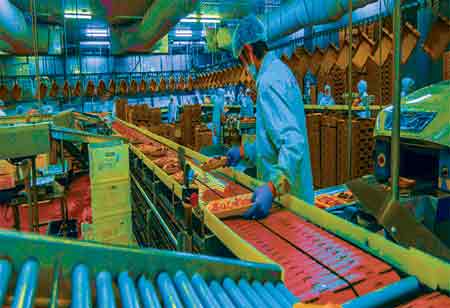Thank you for Subscribing to Food Business Review Weekly Brief
- Home
- Topics
- Alternative Proteins and Plant Based Food
- Beer and Wine
- Canned Beverages
- Coffee And Tea
- Food and Beverage Consulting
- Food and Beverage Financial Service
- Food And Beverages Marketing
- Food Distributors
- Food Ingredients
- Food Sustainability
- Plant Based Food and Beverages
- Seafood Suppliers
- Supplement Manufacturing
- Wine Investment
- News
- Vendor Viewpoint
- CXO Insights
- Conferences
- Newsletter
- CXO Awards
-
The Impact of Automation on Harvesting and Pressing
Winemaking has undergone a remarkable evolution over the centuries, transforming from rudimentary grape stomping to a highly sophisticated and innovative process

By
Food Business Review | Tuesday, January 09, 2024
Stay ahead of the industry with exclusive feature stories on the top companies, expert insights and the latest news delivered straight to your inbox. Subscribe today.

The technological advancements in winemaking have propelled the industry into a new era of sophistication and precision.
FREMONT, CA: Winemaking has undergone a remarkable evolution over the centuries, transforming from rudimentary grape stomping to a highly sophisticated and innovative process. Recently, the industry has embraced technological advancements that contribute to the consistency and quality of wines from one vintage to another.
One significant advancement in winemaking technology is the use of flotation, also known as reverse settling. Traditionally, white wines undergo a process called "cold settling," where the murky juice is left to naturally settle, allowing solids to sink to the bottom. This method is time-consuming and necessitates cooling to prevent premature fermentation. Flotation, however, expedites the clarification process by using nitrogen gas or air bubbles under pressure. As the bubbles rise, they carry the solids with them, allowing for easy removal from the top. This innovation not only accelerates the process but also minimizes energy consumption compared to traditional methods.
Another intriguing development involves a family of yeasts that were historically considered spoilage agents in winemaking and brewing. When properly harnessed, these yeasts contribute to the chemical composition of the wine during fermentation, producing unique and desirable flavor compounds while enhancing the overall aroma profile. Winemakers now view these yeasts as valuable tools for experimenting with different styles, showcasing the dynamic nature of modern winemaking.
In the realm of grape harvesting, technology has revolutionized the process with automatic grape-picking machines. These machines, equipped with advanced capabilities, offer growers flexibility in staffing and the ability to harvest fruit quickly at optimal ripeness. Joining the ranks are destemmers, which further refine the harvesting process. By the time the crates reach the winery, they contain only pristine grapes, often referred to as "Cabernet Caviar." This technological integration streamlines the harvest, ensuring the delivery of high-quality grapes.
The use of inert gas, typically nitrogen, in modern grape presses represents another significant technological leap. By flooding the space with nitrogen, winemakers create a protected environment for the must, freshly crushed juice and skins. This technique prevents oxygen interaction during this critical stage, leading to increased acidity and heightened aromatic compounds in the resulting wines. The application of inert gas is particularly effective in the production of white wines and rosés, showcasing the adaptability of technology in catering to different wine styles.
Looking ahead, the future promises even more innovations in winemaking. Optical sorters utilizing LED lights to separate ripe grapes from diseased or desiccated fruit enhance grape selection. Hybrid barrels, incorporating stainless steel bodies with wooden heads for micro-oxygenation and internal structures for flavor-imparting wood staves, provide a novel approach to aging. Advanced lab testing is poised to guide harvest decisions and identify spoiling agents, further elevating the precision of winemaking.
From grape harvesting to fermentation and aging, each stage benefits from innovations that enhance efficiency, consistency, and the quality of the final product. As winemakers continue to embrace these advancements, the future holds exciting possibilities for further refinement and exploration within the art and science of winemaking.






